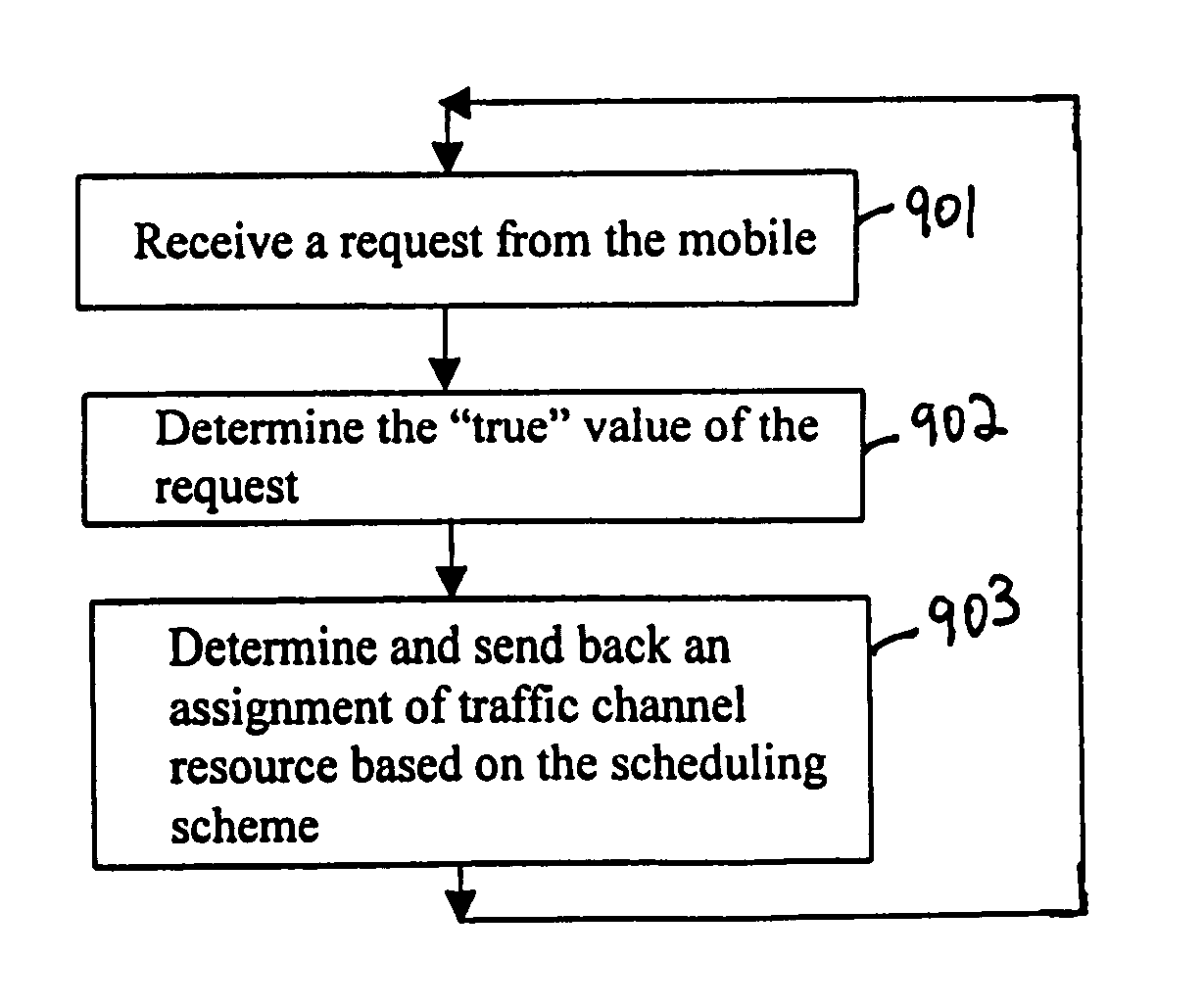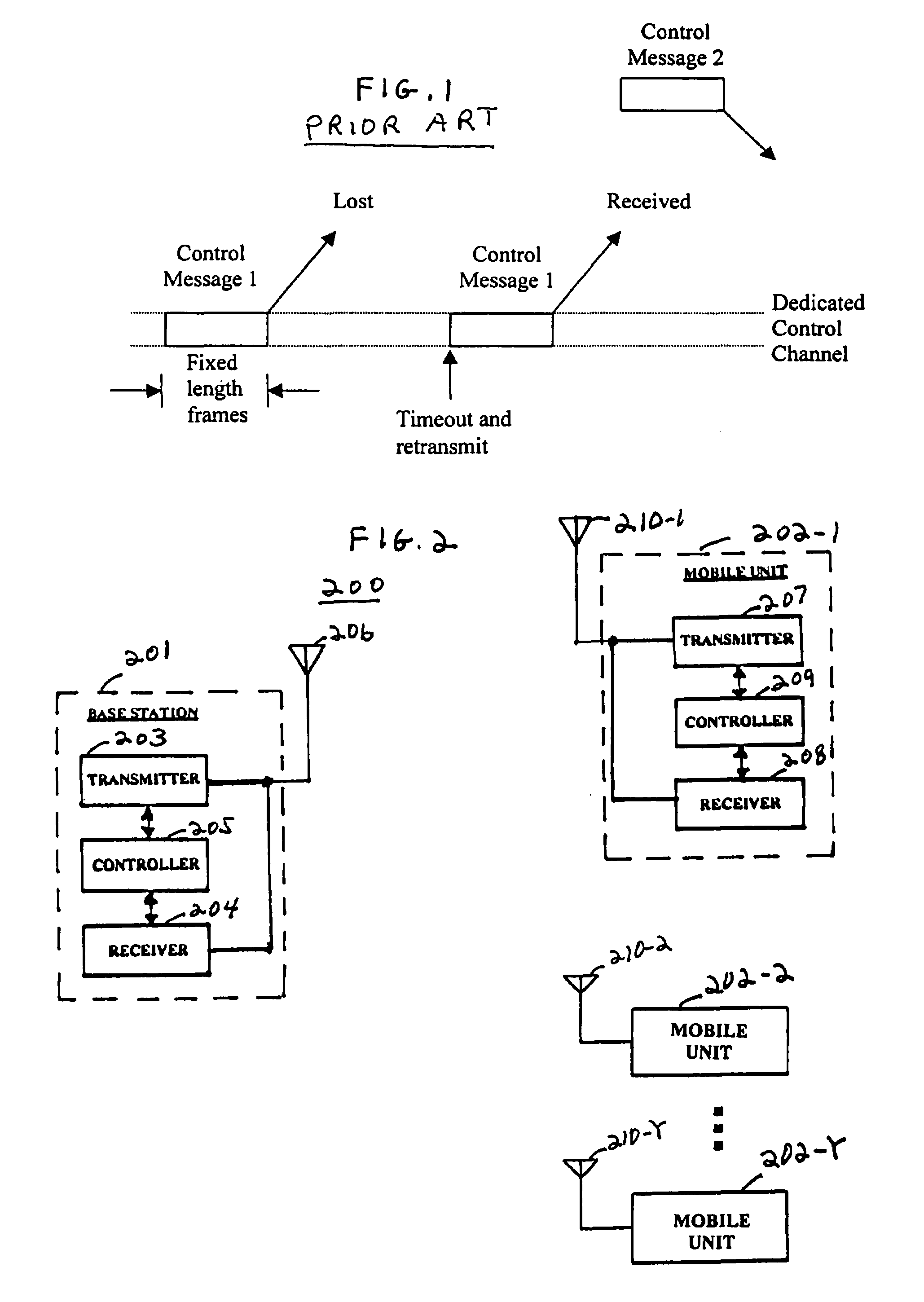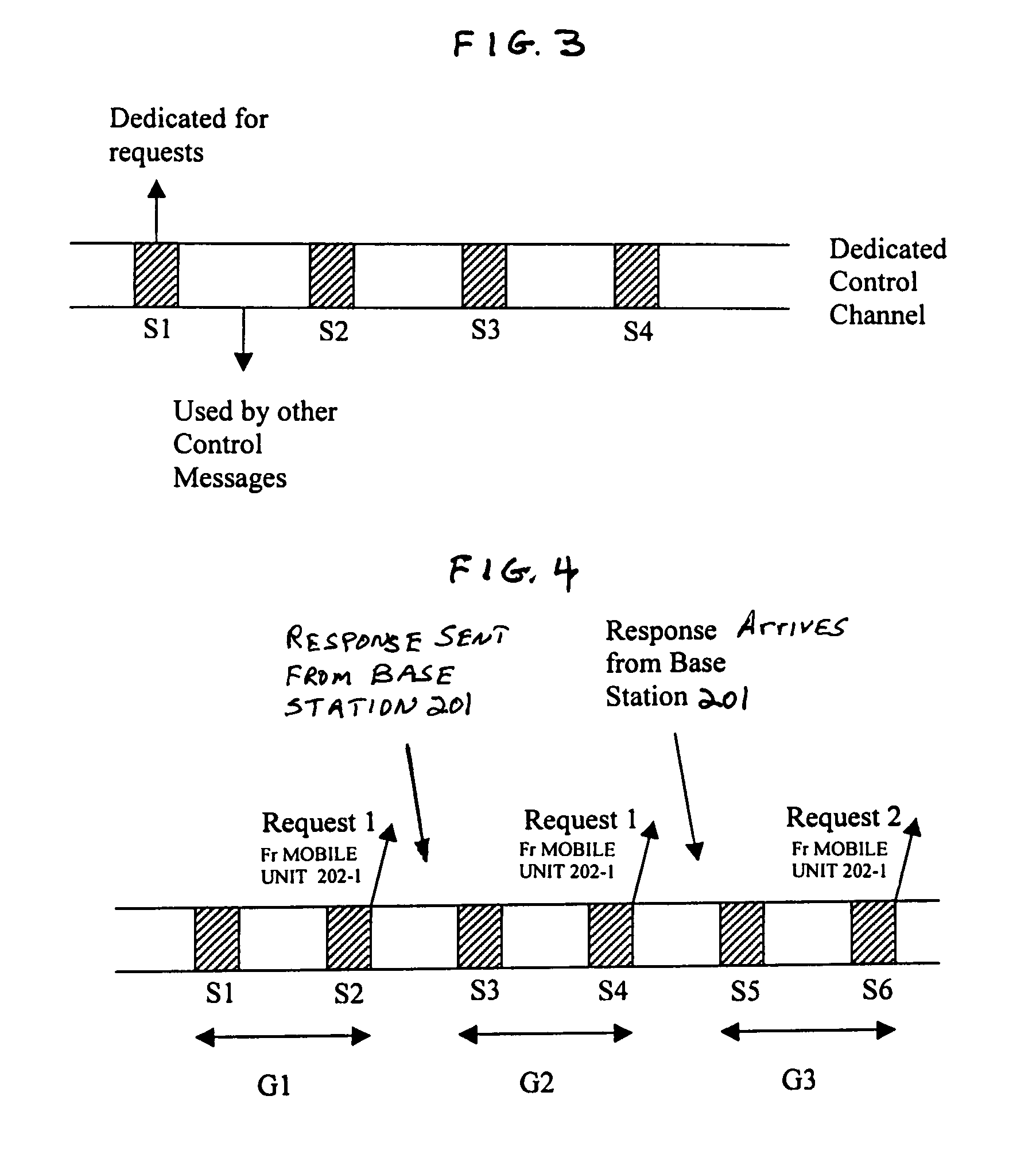Apparatus and method for acquiring an uplink traffic channel, in wireless communications systems
- Summary
- Abstract
- Description
- Claims
- Application Information
AI Technical Summary
Benefits of technology
Problems solved by technology
Method used
Image
Examples
Embodiment Construction
[0015]As indicated above, FIG. 1 graphically illustrates the use of a dedicated control channel for transmitting uplink traffic channel requests in prior known systems. Mobile units, for example, 202-1 through 202-Y of FIG. 2, have a dedicated control channel (DCCH) that is used for exchanging various kinds of control messages. Control messages are transmitted over a fixed length frame. The length of the control message frames is determined with a one size fits all approach in order that various types of control messages can be fitted into the common control message frame. One of the messages that is transmitted over this dedicated channel is a request for a traffic channel by a mobile unit. When such a control message is transmitted the mobile unit typically waits for a response control message from the base station, for example, 201FIG. 2, and in case there is no response in a prescribed time interval, the mobile unit “times out” and retransmits the request control message. Upon r...
PUM
 Login to View More
Login to View More Abstract
Description
Claims
Application Information
 Login to View More
Login to View More - R&D
- Intellectual Property
- Life Sciences
- Materials
- Tech Scout
- Unparalleled Data Quality
- Higher Quality Content
- 60% Fewer Hallucinations
Browse by: Latest US Patents, China's latest patents, Technical Efficacy Thesaurus, Application Domain, Technology Topic, Popular Technical Reports.
© 2025 PatSnap. All rights reserved.Legal|Privacy policy|Modern Slavery Act Transparency Statement|Sitemap|About US| Contact US: help@patsnap.com



